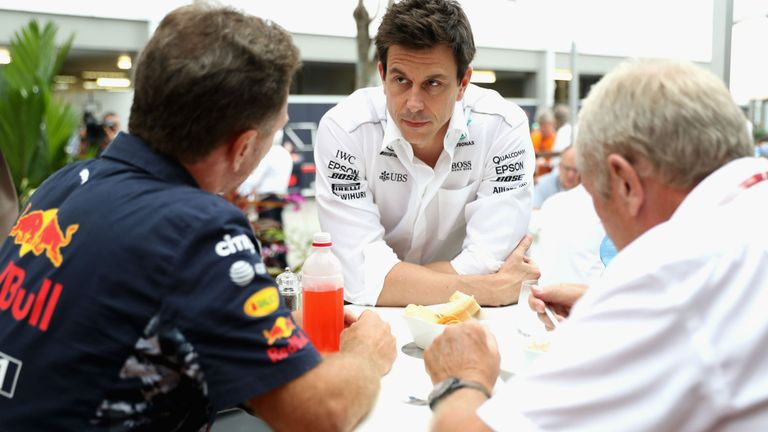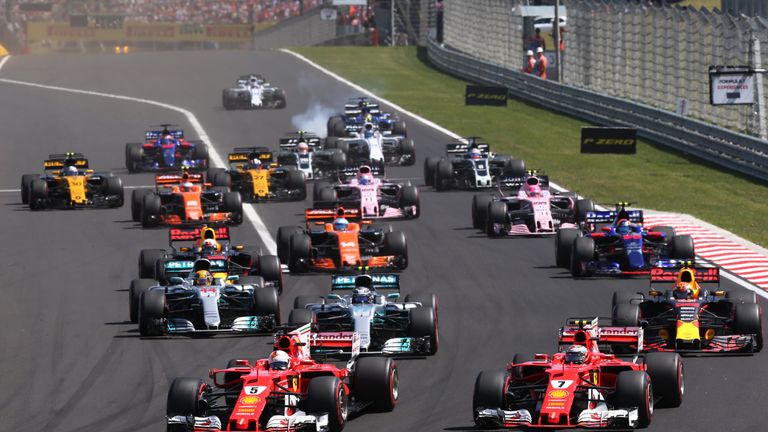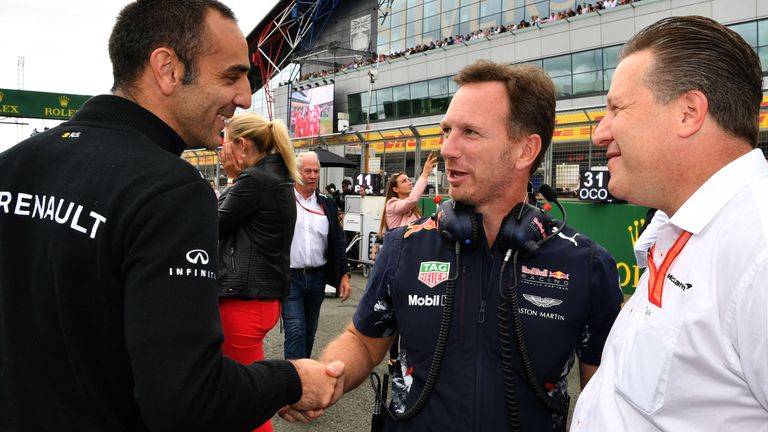F1 teams to hear 2021 engine proposal
F1 teams to meet in Paris on Tuesday; New regulations expected to see important changes to current engine formula
Thursday 16 November 2017 12:20, UK
Today, Liberty Media will present to the teams its initial proposal for the post-2021 F1 engine regulations.
The details are not cast in stone, but they will give a broad indication of where F1 is headed technically for the next decade to come.
The proposals are the result of a long period of consultation and research by Liberty's engine group - headed by former Cosworth boss Nick Hayes.
What is believed will be unveiled is an engine formula largely based on the current one but with some important changes.
The 1.6-litre turbo V6 format will remain - we believe retaining the current single turbo rather than a switch to twin turbos, as had been mooted.
Brawn reveals F1 engine vision
'Current engine has done nothing positive for F1'
The current ERS-h - the piece of kit that recovers heat energy from the turbo - is set to be deleted.
This will mean two things: 1) Less of the engine's sound will be absorbed. 2) The battery will be receiving a reduced flow of recovered energy.
In other words, these engines will be significantly less thermally efficient than the current units - but significantly louder too.
There's a further important tweak: the maximum fuel flow will be increased (maybe by as much as 20 per cent). This will allow the engines to be revved harder.
Currently, although there is a nominal 15,000rpm limit, the engines don't rev anywhere near that high as they are effectively strangled by the fuel flow limit once past around 11,500rpm.
With increased flow, the power will shift further up the rev range - drivers will have to rev them harder in order to get the power. Again, this will increase noise levels.
With ERS-h deleted, all that remains to recover the energy will be the ERS-k - the device that captures braking energy and converts it into electrical energy that's fed to the battery.
The electrical energy deployment will no longer be automatic, but controlled by the driver - back to how it was when we last had ERS-k (KERS) only, in fact, in 2013 - giving more variability.
A lot of the components that are currently development items will be standardised in an effort at controlling costs and making the formula more attractive to new engine manufacturers.
This and the deletion of ERS-h is hoped would make it viable for an independent engine manufacturer to make a commercially available engine for independent teams.
Horner: F1 at a crossroads
Aston Martin open to F1 return
With Porsche reportedly already having an F1 engine research programme underway, there has been talk of having electric motors on each front wheel.
This would effectively make the cars four-wheel-drive and would mean Porsche would have carry-over from its WEC technology. There have been objections to this idea from other engine manufacturers and teams, however, and it remains unclear if this is will actually be proposed.
The objections are two-fold: it would add considerable weight to cars that are already very heavy - by far the heaviest in F1 history. It would also open the door to stability control - by varying the torque across the axle, controlled by software, it potentially could massively dumb-down the skill requirement of the driver.
These are all only broad outlines and Liberty is intent of getting a buy-in from teams, engine manufacturers (both current and prospective) and governing body.
A lot could still change between now and when an engine formula is finally announced by the FIA (which is expected to be in around 12 months from now).
Liberty will be making a commercial presentation to the teams next week, when the equally contentious subject of income distribution will be addressed.






